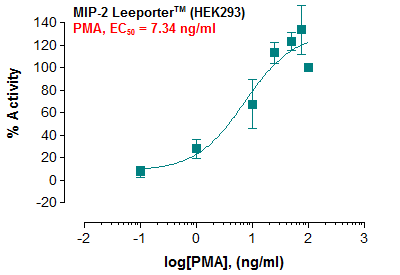Human Citrate synthase / CS Recombinant Protein (His Tag)(Discontinued)
Shipping Info:
For estimated delivery dates, please contact us at [email protected]
| Amount : | 100 µg |
| Purification : | > 90 % as determined by SDS-PAGE |
| Content : | Formulation Lyophilized from sterile PBS, pH 7.4 Normally 5 % - 8 % trehalose, mannitol and 0.01% Tween80 are added as protectants before lyophilization. |
| Storage condition : | Store it under sterile conditions at -20°C to -80°C. It is recommended that the protein be aliquoted for optimal storage. Avoid repeated freeze-thaw cycles. |
| AA sequence : | Met1-Gly466 |
| Alternative Name : | none |
Source : Baculovirus-Insect Cells
Chondroitin sulphate (CS) glycosaminoglycan chains on cell and extracellular matrix proteoglycans (PGs) can no longer be regarded as merely hydrodynamic space fillers. Overwhelming evidence over recent years indicates that sulphation motif sequences within the CS chain structure are a source of significant biological information to cells and their surrounding environment. CS sulphation motifs have been shown to interact with a wide variety of bioactive molecules, e.g. cytokines, growth factors, chemokines, morphogenetic proteins, enzymes and enzyme inhibitors, as well as structural components within the extracellular milieu. They are therefore capable of modulating a panoply of signalling pathways, thus controlling diverse cellular behaviours including proliferation, differentiation, migration and matrix synthesis. Chondroitin sulfate (CS) is a sulfated glycosaminoglycan composed of a long chain of repeating disaccharide units that are attached to core proteins, resulting in CS proteoglycans (CSPGs). In the mature brain, CS is concentrated in perineuronal nets (PNNs), which are extracellular structures that surround synapses and regulate synaptic plasticity. In addition, CS is rapidly synthesized after CNS injury to create a physical and chemical barrier that inhibits axon growth.
Chondroitin sulphate (CS) glycosaminoglycan chains on cell and extracellular matrix proteoglycans (PGs) can no longer be regarded as merely hydrodynamic space fillers. Overwhelming evidence over recent years indicates that sulphation motif sequences within the CS chain structure are a source of significant biological information to cells and their surrounding environment. CS sulphation motifs have been shown to interact with a wide variety of bioactive molecules, e.g. cytokines, growth factors, chemokines, morphogenetic proteins, enzymes and enzyme inhibitors, as well as structural components within the extracellular milieu. They are therefore capable of modulating a panoply of signalling pathways, thus controlling diverse cellular behaviours including proliferation, differentiation, migration and matrix synthesis. Chondroitin sulfate (CS) is a sulfated glycosaminoglycan composed of a long chain of repeating disaccharide units that are attached to core proteins, resulting in CS proteoglycans (CSPGs). In the mature brain, CS is concentrated in perineuronal nets (PNNs), which are extracellular structures that surround synapses and regulate synaptic plasticity. In addition, CS is rapidly synthesized after CNS injury to create a physical and chemical barrier that inhibits axon growth.
Endotoxin :< 1.0 EU per µg of the protein as determined by the LAL method.
Other pack size also available.
For Research Use Only. Not for use in diagnostic/therapeutics procedures.
|
There are currently no product reviews
|














.png)








